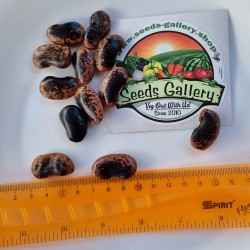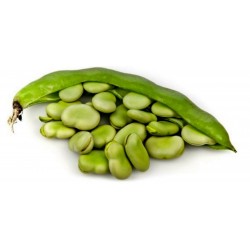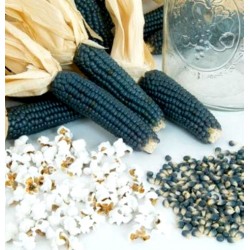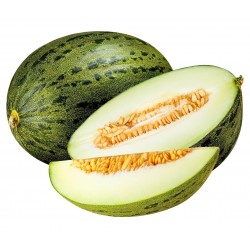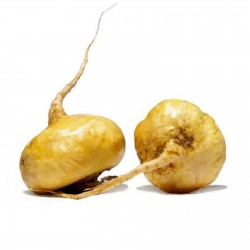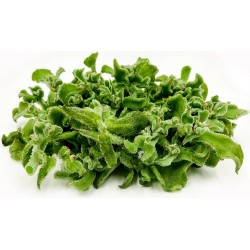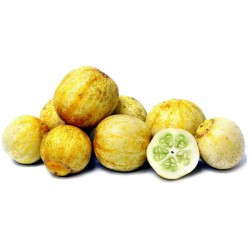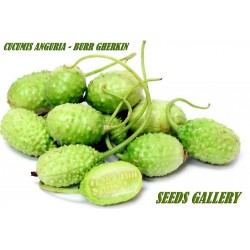Seeds Gallery Com,
5/
5
<h2><strong>Semena Ibiškovec jedlý (Abelmoschus esculentus)</strong></h2>
<h2><span style="color: #ff0000;" class=""><strong>Cena za balení 1g (+-15) semen.</strong></span></h2>
<div>
<p style="color: #202122; font-size: 14px;"><b>Ibiškovec jedlý</b><span> </span>(<i>Abelmoschus esculentus</i>)<sup id="cite_ref-botr_1-0" class="reference"></sup><span> </span>je rostlina z čeledi<span> </span>slézovité. Je znám též jako<span> </span><b>okra</b>,<span> </span><b>ibišek jedlý</b><span> </span>nebo pod zavádějícím názvem<span> </span><b>proskurník jedlý</b>. Je to jednoletá bylina s dlanitě laločnými listy a velkými žlutými květy. Ibiškovec jedlý je stará kulturní rostlina, pocházející pravděpodobně z<span> </span>Indie. Nezralé plody, okra, jsou zejména v<span> </span>Asii<span> </span>a<span> </span>Africe<span> </span>široce využívány jako zelenina. Rostlina poskytuje také vlákna podobná<span> </span>jutě.</p>
<p>Ibiškovec jedlý je 1 až 2 metry vysoká jednoletá<span> </span>bylina<span> </span>se střídavými listy. Téměř celá rostlina je řídce pokryta špičatými chlupy. Stonek je často dutý.<span> </span>Listy<span> </span>jsou dlanitě laločnaté se 3 až 7 laloky, s<span> </span>čepelí<span> </span>10 až 30 cm v průměru a 7 až 15 cm dlouhým<span> </span>řapíkem. Okraj čepele je řídce zubatý.</p>
<p>Květy jsou jednotlivé, úžlabní, s 1 až 2 cm dlouhou stopkou.<span> </span>Kalich<span> </span>je zvonkovitý, 2 až 3 cm dlouhý, hustě hvězdovitě chlupatý, podepřený 7 až 10 nitkovitými listeny<span> </span>kalíšku.<span> </span>Koruna<span> </span>je žlutá nebo zlatožlutá nebo řidčeji bílá, se sytě purpurovým středem, a dosahuje velikosti 5 až 7 cm v průměru.<span> </span>Tobolka<span> </span>je 10 až 25 cm dlouhá a 1,5 až 2 cm široká, dlouze zobanitá, se 30 až 60 kulovitými šedými semeny.</p>
<h2 style="color: #000000; font-size: 1.5em;"><span class="mw-headline" id="Rozšíření">Rozšíření</span></h2>
<p style="color: #202122; font-size: 14px;">Rostlina pochází patrně z Indie nebo z Afriky. Dnes je rozšířena do tropických a subtropických oblastí celého světa.</p>
<h2 style="color: #000000; font-size: 1.5em;"><span class="mw-headline" id="Význam">Význam</span></h2>
<p>Ibiškovec jedlý je stará kulturní rostlina a byl pěstován v<span> </span>Egyptě<span> </span>již 2000 let před naším letopočtem. Lusky jsou v některých částech světa, zejména v<span> </span>Asii<span> </span>a<span> </span>Africe, významnou zeleninou, známou jako okra. Sklízejí se nezralé, konzumují se syrové nebo různým způsobem tepelně upravené. Ze stonků ibiškovce jedlého je získáváno hladké hnědé vlákno podobné vláknu z<span> </span>jutovníku.<sup id="cite_ref-urtas_3-1" class="reference"></sup><sup id="cite_ref-flchina_2-1" class="reference"></sup></p>
<h2 style="color: #000000; font-size: 1.5em;"><span id="Vyu.C5.BEit.C3.AD_v_kuchyni"></span><span class="mw-headline" id="Využití_v_kuchyni">Využití v kuchyni</span></h2>
<p>Vařené<span> </span>oplodí<span> </span>ibiškovce je mazlavé. Ačkoliv tak mnoha lidem chutná, bývá dávána přednost způsobu přípravy, který slizkost pokrmu minimalizuje. Toho lze dosáhnout, pokud se oplodí vaří vcelku a krátce. Je též možné plodinu rychle osmahnout nebo vařit s kyselými přísadami, jako jsou<span> </span>citrusy,<span> </span>rajčata<span> </span>nebo<span> </span>ocet. Obvykle stačí několik kapek citronové šťávy. Případně se plody nakrájí a vaří dlouhou dobu, díky čemuž se mazlavá hmota rozpustí – tímto způsobem se ibiškovec připravuje například v<span> </span>gumbu, kde slouží jako zahušťovadlo. Nezralé plody lze též sterilovat.</p>
<p>V<span> </span>Sýrii,<span> </span>Tunisku,<span> </span>Egyptě,<span> </span>Řecku,<span> </span>Íránu,<span> </span>Iráku,<span> </span>Jordánsku,<span> </span>Libanonu,<span> </span>Turecku,<span> </span>Jemenu<span> </span>a dalších částech východního<span> </span>Středomoří, včetně<span> </span>Kypru<span> </span>a<span> </span>Izraele, se ibiškovec běžně používá v dušených pokrmech (přípravou podobných českému guláši) se zeleninou a masem. Tato zelenina je také velmi oblíbená v západní<span> </span>Asii, severní<span> </span>Indii<span> </span>a<span> </span>Pákistánu. V<span> </span>Karibiku<span> </span>se ibiškovec podává ve formě<span> </span>polévky, často s rybou.</p>
<h2 style="color: #000000; font-size: 1.5em;"><span class="mw-headline" id="Dostupnost">Dostupnost</span></h2>
<p>V České republice lze zakoupit mražený ibiškovec ve specializovaných prodejnách asijských nebo arabských specialit, naložený ibiškovec v omáčce je k dostání v mezinárodní sekci velkých supermarketů a obchodech s arabskými nebo tureckými specialitami.</p>
</div>
<script src="//cdn.public.n1ed.com/G3OMDFLT/widgets.js"></script>
VE 8 G (1g)




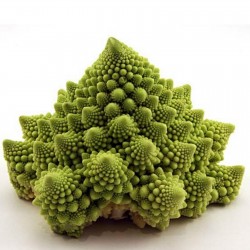
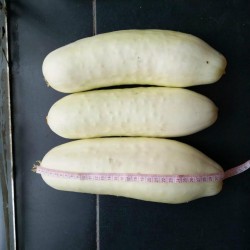

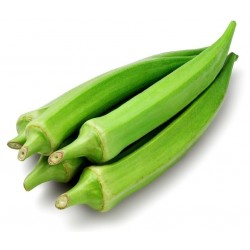
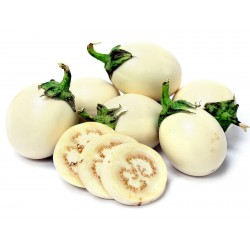
.png)

